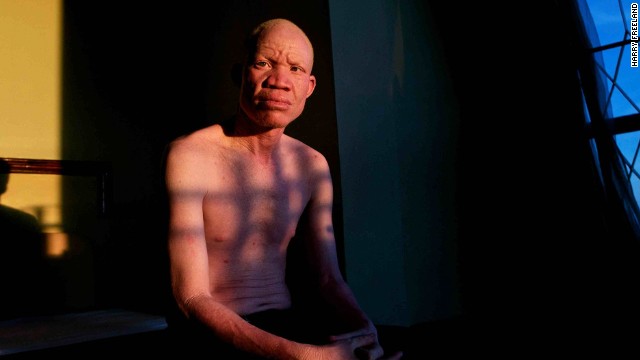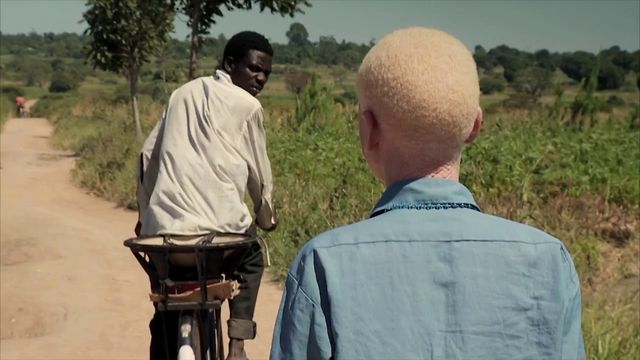
Eric Beckman founded the New York International Children’s Film Festival with his wife in 1997
NEW YORK INTERNATIONAL CHILDREN’S FILM FESTIVAL
Multiple venues throughout Manhattan
[Not for] Children Film Festival Benefit: February 28, $300 – $1,000
March 1-24, $13 (opening-night $20-$40)
All-Access VIP Pass: $400
www.gkids.com
Since its beginnings in 1997, the New York International Children’s Film Festival has been dedicated to bringing more intelligent movies to kids ages three to eighteen. Part of GKIDS (Guerrilla Kids International Distribution Syndicate), NYICFF hosts programs year-round, but its bigger-than-ever sixteenth annual festival is scheduled to take place March 1-24, spread out across such venues as Asia Society, the IFC Center, Tribeca Cinemas, FIAF, the Film Society of Lincoln Center, Scholastic, the DGA Theater, and the SVA Theatre. More than one hundred features, shorts, documentaries, and animated films will be presented from France, Belgium, Canada, India, Japan, the Netherlands, Italy, Taiwan, America, and other nations, in addition to workshops, a filmmaking camp, a prefestival not-for-children benefit (showing films that were submitted to NYICFF but are clearly not for kids), and the opening-night gala, the U.S. premiere of Benjamin Renner’s animated Ernest & Celestine, followed by a catered reception. This year’s jury, which includes such actors, writers, directors, and producers as Geena Davis, Gus Van Sant, Susan Sarandon, Jeffrey Wright, Christine Vachon, and Michael Modine, has also selected such films as Laurent Boileau and Jung Henin’s Approved for Adoption, Enzo D’Alò’s Pinocchio, the English-language premiere of Koji Masunari’s Welcome to the Space Show, and the Spanish-language version of Wreck-It Ralph called ¡Rompe Ralph! Eric Beckman, who cofounded NYICFF in 1997 with his wife, Emily Shapiro, was only too happy to discuss this year’s festival and the state of children’s films in general.
twi-ny: What prompted you to form GKIDS and NYCIFF in the first place?
Eric Beckman: NYICFF was formed to fill a void in the marketplace for exciting, meaningful, diverse, nuanced, eye-opening, thought-provoking film for young people. At the time we launched back in the late 1990s, the indie film movement was in full swing, and on any given weekend in New York City you could see maybe one hundred different films for adults — edgy indie films, French art films, romantic comedies, teen sex comedies, high-brow Oscar bait, action pictures, silent film retrospectives, and so on — literally any kind of film you could imagine was on tap for adults. But for kids there would be just one movie playing, which seemed just wrong for a city like New York. So the germinating idea for the festival was that we would bring a hugely exciting world of film to NYC every winter so that for four weeks during the festival, there would be the same kind of cinematic diversity and creativity and range of experience for kids that there is for adults.
twi-ny: How has the festival changed over the years, since its debut in 1997?
Eric Beckman: We’re much bigger (the largest in North America). NYICFF is now an Oscar qualifying festival, we have more films — and perhaps equally important we have a paid staff. We have also secured a reputation as a significant industry event on par with the prestige “adult” festivals in terms of important feature premieres and our record of introducing significant new directors to U.S. audiences and debuting future Oscar nominees. But the core concept is still exactly the same — uncompromising, excellent film for ages three to eighteen, including shorts, features, animation, live action, docs, and experimental films from six continents.
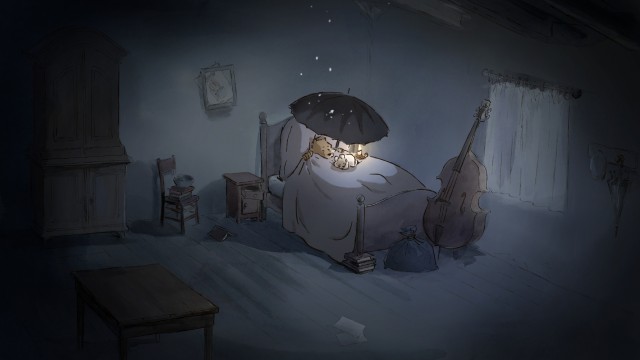
Benjamin Renner’s ERNEST & CELESTINE will open the 2013 New York International Children’s Film Festival
twi-ny: Do you think children’s films themselves have changed over the last sixteen years?
Eric Beckman: Yes and no. The Pixar animated CGI picture has supplanted Pocahontas/Lion King as the model to emulate. And more recently, with companies like Laika and others producing pictures every few years, there has been a wider variety of films out there — which has been great. But the underlying market forces that limit what is available for children have remained, and if anything have gotten stronger. Unlike films for adults, there is no independent circuit for children’s movies, so pretty much everything that is released is engineered to reach a mass audience. Amour at $4 million box office gross is a critical and financial success — but The Pirates! at $31 million is a potential write-down, even though it is a wonderful movie. So this pressure to reach mass audience to achieve $150 million domestic box office continues to affect the types of children’s films that get made in the U.S. — and severely limits the number of independent or foreign titles that can get a release. NYICFF and GKIDS are working to build that indie-for-kids circuit — and we have had some notable success at the Oscars and getting films attention and distribution, a trend we expect to continue.
twi-ny: With everyone, including children, having more access to films of all kinds over the internet, on cable, and on handheld devices, should parents worry more than ever about what their kids are watching?
Eric Beckman: This is a parenting question, so I will take off my film festival director hat for a moment. I have three children, and to be honest I am not overly worried about content. I am more concerned with limiting screen time, making room for reading, exploring art, theater, music, and other activities — and encouraging creative use of technology rather than passive consuming. Yes, there is some terrible stuff out there, but hopefully you raise your kids to make good choices rather than making the choices for them.
twi-ny: You have another prestigious jury this year. What do you look for in a jurist?
Eric Beckman: That is an often-asked question — as clearly Gus Van Sant and James Schamus do not jump to mind when you think of children’s films. But it is exactly that take we are looking for. We reach out to jurors who love and understand and are involved in creating great films. Not great children’s films, but great films period. Our jurors generally fall into one or more of three categories: actors or filmmakers (many of them parents) who we saw were coming to the festival so were already fans and supporters; innovative and provocative filmmakers who support a wider and more interesting range of film being made for young people; and renowned foreign filmmakers whose works first found U.S. audiences through the festival.
twi-ny: On February 28, there’s a specifically “not for children” benefit. What can adults expect from that?
Eric Beckman: The NY Int’l [Not for] Children’s Film Festival is a really, really fun and slightly naughty event. Every year NYICFF receives submissions that are so “not for kids” that you have to wonder what the person submitting the film was thinking. This began at the very first festival, with a film made with Barbie dolls that would definitely garner an NC-17 rating. So a few years ago, we decided to show a few of these films at a private cocktail party we were doing for board members, staff, and other friends of the festival. Everyone had so much fun we made it the theme of our fundraiser that year, and thus began the tradition.
The event takes place Feb 28, the night before Opening Night. You will want to reserve your babysitter now! It is at Tribeca Film Center and involves a screening of very inappropriate films that were submitted to the festival, plus food, cocktails, drinking games, prizes (courtside Knicks tickets, racecar driving school, all-access family passes to the festival . . .) and more things that I am not even aware of, since I am not on the benefit committee. The proceeds benefit the festival’s FilmEd program, which assures that economically disadvantaged New York City families have access to the festival’s programs and filmmaking classes. So it is a great event for a great cause.
 The 1952 MGM musical Singin’ in the Rain is one of the all-time-great movies about movies, in this case focusing on the treacherous transition from silent films to talkies. It’s the mid-1920s, and the darlings of the silver screen are handsome Don Lockwood (Gene Kelly) and blonde bombshell Lina Lamont (Jean Hagen). They’re supposedly just as hot offscreen as on, as Don explains to radio gossip host Dora Bailey (Madge Blake, later best known as Aunt Harriet on the Batman TV series) at their latest Hollywood premiere, but in actuality the debonair Don can’t stand the none-too-bright yet still conniving Lina. After accidentally bumping into Kathy Selden (Debbie Reynolds), an independent-thinking young woman who claims to not even like the movies, Don is soon trying to chase her down, determined to get to know her better. Meanwhile, studio head R. F. Simpson (Millard Mitchell) decides he has to capitalize on the surprise success of the first talking picture, The Jazz Singer, by turning the latest Lockwood-Lamont movie, The Dueling Cavalier, into a talkie, with initially disastrous results, threatening to bring everything and everyone crashing down.
The 1952 MGM musical Singin’ in the Rain is one of the all-time-great movies about movies, in this case focusing on the treacherous transition from silent films to talkies. It’s the mid-1920s, and the darlings of the silver screen are handsome Don Lockwood (Gene Kelly) and blonde bombshell Lina Lamont (Jean Hagen). They’re supposedly just as hot offscreen as on, as Don explains to radio gossip host Dora Bailey (Madge Blake, later best known as Aunt Harriet on the Batman TV series) at their latest Hollywood premiere, but in actuality the debonair Don can’t stand the none-too-bright yet still conniving Lina. After accidentally bumping into Kathy Selden (Debbie Reynolds), an independent-thinking young woman who claims to not even like the movies, Don is soon trying to chase her down, determined to get to know her better. Meanwhile, studio head R. F. Simpson (Millard Mitchell) decides he has to capitalize on the surprise success of the first talking picture, The Jazz Singer, by turning the latest Lockwood-Lamont movie, The Dueling Cavalier, into a talkie, with initially disastrous results, threatening to bring everything and everyone crashing down.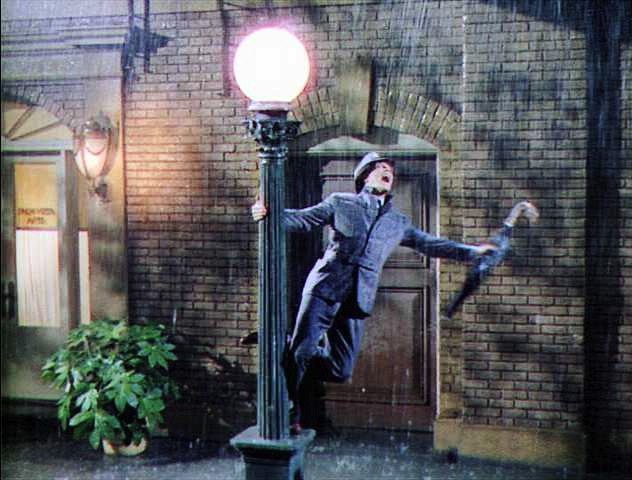
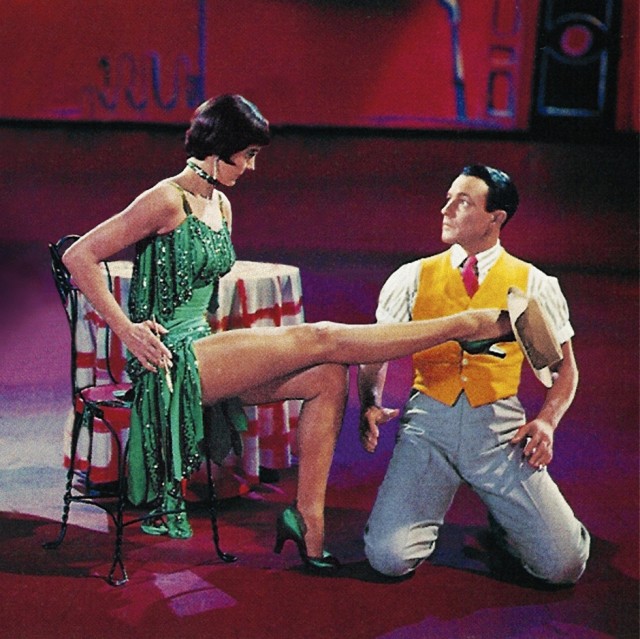
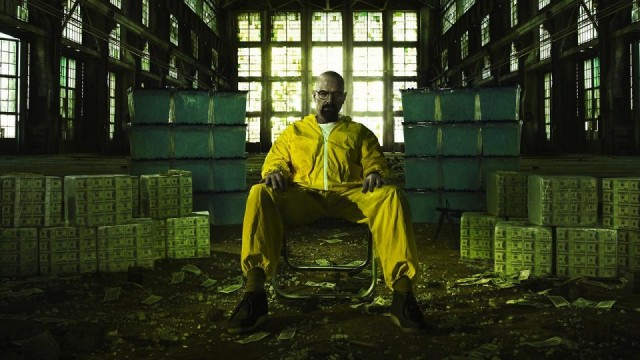
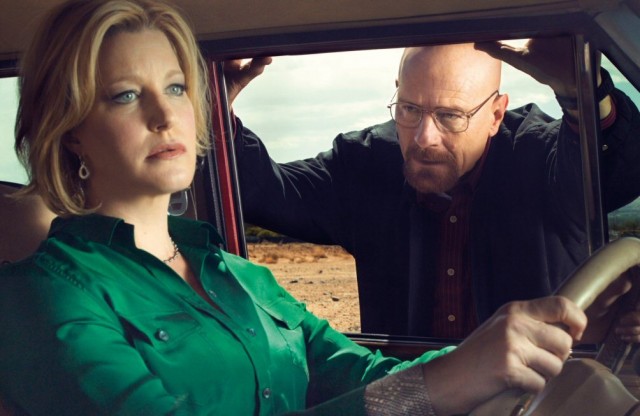
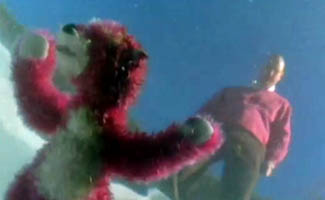
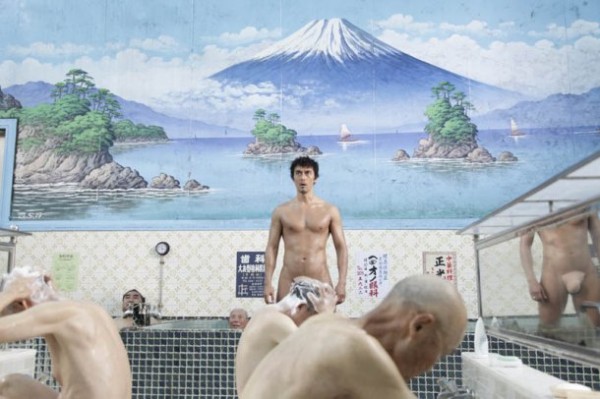
 Adapted from Mari Yamazaki’s popular manga series, Thermae Romae is a bizarre, hysterical tale about the importance of public baths throughout history. In the year 128, architect Lucius Modestus (Hiroshi Abe) has lost his mojo, losing his job to a youngster with more modern ideas and being hounded by his wife to have greater ambition. Down on his luck, he is contemplating his bleak future when he sees a crack at the bottom of a pool, which sucks him into a contemporary Japanese bath house where a bunch of old men are relaxing. The confused fish out of water is amazed by what he sees, from bottled drinks to a clothing basket, and upon magically returning to Rome, he adds these elements to a new bath design that is a huge hit. Soon, every time he goes into water in Rome, he ends up in Japan, bumping into the adorable Mami Yamakoshi (Aya Ueto) and bringing back more ideas, eventually designing bath houses for Emperor Hadrian (Masachika Ichimura), who believes the public bath is a key way to maintain a good relationship with the common people. But despite his success, Lucius can’t help feeling like a fraud, and things only get more complicated when he gets involved in the political machinations of Rome revolving around Hadrian’s successor, either the dedicated Antoninus (Kai Shishido) or self-obsessed womanizer Ceionius (Kazuki Kitamura). Abe is a riot as Lucius, displaying wonderful deadpan flare as he stands naked in front of men and women, refers to the modern-day folk as a flat-faced tribe, and gazes in wonder at a flush toilet. His trips from Rome to Japan evoke the tunnel in Being John Malkovich, complete with appropriately goofy special effects. Writer Shōgo Mutō and director Hideki Takeuchi keep things moving at a playful pace, celebrating social interaction as well as potential romance, complete with a fun Greek chorus of Japanese bath lovers. A sequel has just come out in Japan, but you can catch the first film on July 14 at 5:15 as part of the annual “Japan Cuts” series at Japan Society, which runs July 11-21 and includes such other works as Takashi Miike’s Lesson of the Evil, Yukihiro Toda’s There Is Light, Yuki Tanada’s The Cowards Who Looked to the Sky, Mika Ninagawa’s Helter Skelter, and Keishi Otomo’s Rurouni Kenshin, many of which are copresentations with the Film Society of Lincoln Center’s New York Asian Film Festival.
Adapted from Mari Yamazaki’s popular manga series, Thermae Romae is a bizarre, hysterical tale about the importance of public baths throughout history. In the year 128, architect Lucius Modestus (Hiroshi Abe) has lost his mojo, losing his job to a youngster with more modern ideas and being hounded by his wife to have greater ambition. Down on his luck, he is contemplating his bleak future when he sees a crack at the bottom of a pool, which sucks him into a contemporary Japanese bath house where a bunch of old men are relaxing. The confused fish out of water is amazed by what he sees, from bottled drinks to a clothing basket, and upon magically returning to Rome, he adds these elements to a new bath design that is a huge hit. Soon, every time he goes into water in Rome, he ends up in Japan, bumping into the adorable Mami Yamakoshi (Aya Ueto) and bringing back more ideas, eventually designing bath houses for Emperor Hadrian (Masachika Ichimura), who believes the public bath is a key way to maintain a good relationship with the common people. But despite his success, Lucius can’t help feeling like a fraud, and things only get more complicated when he gets involved in the political machinations of Rome revolving around Hadrian’s successor, either the dedicated Antoninus (Kai Shishido) or self-obsessed womanizer Ceionius (Kazuki Kitamura). Abe is a riot as Lucius, displaying wonderful deadpan flare as he stands naked in front of men and women, refers to the modern-day folk as a flat-faced tribe, and gazes in wonder at a flush toilet. His trips from Rome to Japan evoke the tunnel in Being John Malkovich, complete with appropriately goofy special effects. Writer Shōgo Mutō and director Hideki Takeuchi keep things moving at a playful pace, celebrating social interaction as well as potential romance, complete with a fun Greek chorus of Japanese bath lovers. A sequel has just come out in Japan, but you can catch the first film on July 14 at 5:15 as part of the annual “Japan Cuts” series at Japan Society, which runs July 11-21 and includes such other works as Takashi Miike’s Lesson of the Evil, Yukihiro Toda’s There Is Light, Yuki Tanada’s The Cowards Who Looked to the Sky, Mika Ninagawa’s Helter Skelter, and Keishi Otomo’s Rurouni Kenshin, many of which are copresentations with the Film Society of Lincoln Center’s New York Asian Film Festival.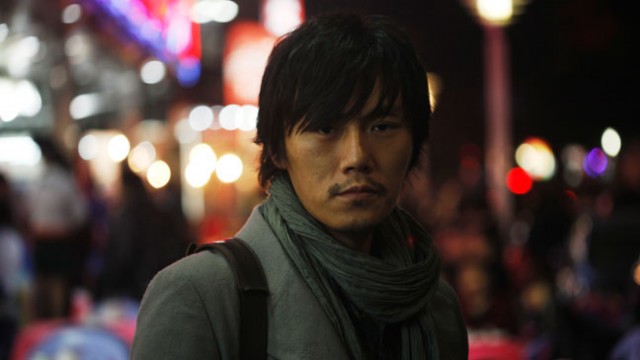
 Controversial Sixth Generation director Lou Ye, who scored an international hit with 2000’s Suzhou River but whose work is regularly banned by Chinese authorities, officially returns to his homeland with Mystery, a complex tale that weaves together two main stories in the centrally located city of Wuhan. The dark film opens with a young woman, Xiaomin (Chang Fangyuan), getting mowed down by a car racing down the highway on a rainy night. Meanwhile, the married Sang Qi (Qi Xi) tells her new friend, single mother Lu Jie (Hao Lei), that she thinks her husband, Yongzhao (Qin Hao), is having an affair, but both women soon have more surprises in store for them as an intricate web of infidelity, betrayal, obsession, lies, class, cover-ups, and payoffs slowly reveals itself. Written by Lou (Purple Butterfly, Summer Palace) with Mei Feng and Yu Fan, Mystery, a selection of the Un Certain Regard sidebar at the 2012 Cannes Film Festival and Best Picture, Best Screenwriter, and Best Newcomer (Qi Xi) winner at the Asian Film Awards, is a moody, often uneasy work that tries too hard to confuse the viewer yet still manages to be compelling as things eventually come into focus. Inspired by three stories Mei found on the internet about changing social structures on the mainland, the film ends with unexpected violence that Lou was forced to edit for the Chinese release, leading him to remove his name from that version. Mystery is having its North American premiere July 3 & 11 at the Walter Reade Theater as part of the New York Asian Film Festival, which continues through July 15 with works from China, Japan, Thailand, Korea, the Philippines, and other countries, including Jang Cheol-Soo’s Secretly Greatly, Hideo Nakata’s The Complex, Jeong Byeong-Gil’s Confession of Murder, Johnnie To’s Drug War, Takashi Miike’s Lesson of the Evil, and a retrospective of Taiwanese director Tsai Yang-Ming.
Controversial Sixth Generation director Lou Ye, who scored an international hit with 2000’s Suzhou River but whose work is regularly banned by Chinese authorities, officially returns to his homeland with Mystery, a complex tale that weaves together two main stories in the centrally located city of Wuhan. The dark film opens with a young woman, Xiaomin (Chang Fangyuan), getting mowed down by a car racing down the highway on a rainy night. Meanwhile, the married Sang Qi (Qi Xi) tells her new friend, single mother Lu Jie (Hao Lei), that she thinks her husband, Yongzhao (Qin Hao), is having an affair, but both women soon have more surprises in store for them as an intricate web of infidelity, betrayal, obsession, lies, class, cover-ups, and payoffs slowly reveals itself. Written by Lou (Purple Butterfly, Summer Palace) with Mei Feng and Yu Fan, Mystery, a selection of the Un Certain Regard sidebar at the 2012 Cannes Film Festival and Best Picture, Best Screenwriter, and Best Newcomer (Qi Xi) winner at the Asian Film Awards, is a moody, often uneasy work that tries too hard to confuse the viewer yet still manages to be compelling as things eventually come into focus. Inspired by three stories Mei found on the internet about changing social structures on the mainland, the film ends with unexpected violence that Lou was forced to edit for the Chinese release, leading him to remove his name from that version. Mystery is having its North American premiere July 3 & 11 at the Walter Reade Theater as part of the New York Asian Film Festival, which continues through July 15 with works from China, Japan, Thailand, Korea, the Philippines, and other countries, including Jang Cheol-Soo’s Secretly Greatly, Hideo Nakata’s The Complex, Jeong Byeong-Gil’s Confession of Murder, Johnnie To’s Drug War, Takashi Miike’s Lesson of the Evil, and a retrospective of Taiwanese director Tsai Yang-Ming. 
